The Wildlife Trade: A personal view
by Giles Clark
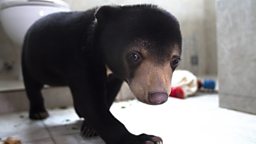
Mary the orphaned baby sun bear stole my heart
There’s Something About Mary – from the moment I stepped into Matt’s house in the town of Luang Prabang in Laos PDR, Mary the orphaned baby sun bear stole my heart. When I first met Mary, she’d been rescued just days before and even though she was severely malnourished I clearly saw that she was full of determination.
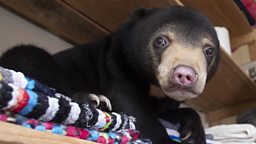
They become a commodity, exploited like many other species in the illegal wildlife trade.
Mary’s story immediately made me feel angry and exasperated. Her life had started in the wild but sadly what happened to her was all too familiar to the team at . Mothers are often killed for their gall bladders and other body parts which are sort after to be used in traditional Chinese medicine. The cubs are bundled into sacks, usually taken to start their captive life as an exotic pet but as they outgrow their domestic surroundings they frequently end up in the bear-bile farm industry. They become a commodity, exploited like many other species in the illegal wildlife trade.

Nothing can prepare you for the moment you see a wildlife market for the first time.
Nothing can prepare you for the moment you see a wildlife market for the first time. For me, that was nearly 20 years ago in Sumatra in Indonesia, and when I close my eyes, I can still see it clearly. I remember standing in the street and seeing row upon row of cages, stacked metres high and all stuffed with animals. The poor occupants were a wide range of species, including baby primates, bats, civets, slow loris, reptiles, the list went on. Some were already dead, others just moments away from it. A lack of food, water and the sheer stress had taken its toll. Hearing their screams and with tears in my eyes I asked my host “What on earth are all these animals doing here?” His reply, “some are wanted as pets and others will be eaten as exotic food or used in traditional medicines”.
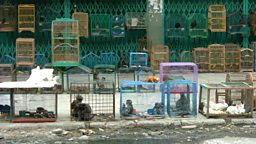
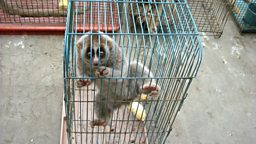

Eating wildlife has become a twisted and perverse demonstration of prosperity.
I completely understand that people need to make a living but as someone who has worked with animals all my life, it broke my heart to see and what was most shocking of all was that this market wasn’t a one off. I quickly learned that inhumane wildlife markets like this are found all over the region and in many countries around the planet. The majority of wildlife consumed is often infinitely more expensive to purchase than other food sources available and in recent years, as the wealth of people has increased, eating wildlife has become a twisted and perverse demonstration of prosperity.
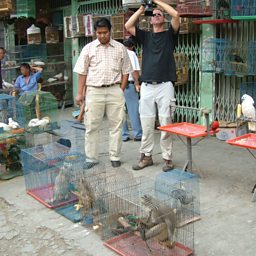
This year has firmly thrust wildlife markets and the illegal trade into the spotlight.
Humanity surely has to heed this as a warning.
Experts believe sometime towards the end of 2019, it’s thought a market in Wuhan, China became the source of a zoonotic virus that was able to mutate from a bat to an intermediate host, most likely a pangolin and then finally to humans. What happened next has been devastating and all of us are still coming to terms with it. But this hasn’t been the first zoonotic disease to originate from the horrors of wildlife markets, SARS and Ebola are two other recent examples.
As the world scrambles to deal with the unprecedented global coronavirus crisis, humanity surely has to heed this as a warning. We have to acknowledge that the health of the environment and its wildlife is intrinsically linked to ours. At the end of this pandemic, if there can be one positive, then hopefully it will be the real impetus to truly tackle and eliminate the wildlife trade for good.

We must as a global community show a deep-seated respect and compassion for the natural world.
For me, it feels incredibly personal – ever since my first encounter with a wildlife market all those years ago, I’ve had the displeasure of visiting dozens more like it. I’ve witnessed the damage they are inflicting on habitats – as species are vacuumed up to fill the ever-increasing demand, but also, I have rescued helpless individuals, animals that are all suffering and its truly heart breaking. We cannot rely on science to come to our rescue; we must as a global community show a deep-seated respect and compassion for the natural world.

The good news is that there are solutions
The good news is that there are solutions, with many people and organisations already fighting for our wildlife and last year I had the honour to spend time working with one such an organisation – Free the Bears in Laos.
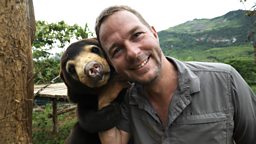
It鈥檚 their mission to make a real difference
Working as a Technical Advisor at enabled me to be on the front line of conservation, it’s their mission to make a real difference; not only to the individual bears (there is no feeling like seeing a bear take its first swim after years trapped in a tiny cage or dig in a termites nest, having never been outside) but to the wider issue too, supporting law enforcement efforts of the local and national authorities clamping down on the trade.
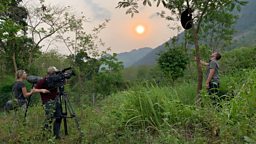
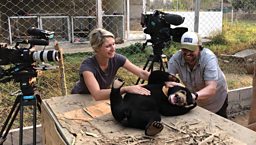
I hope this series creates awareness about the numerous conservation challenges we face.
I hope this series creates awareness about the numerous conservation challenges we face. At times it was incredibly difficult, both physically and psychologically and I’d be lying if I didn’t say there were days that I felt completely overwhelmed but the animals we rescued made it worthwhile and the knowledge that there are still animals out there that need our help gives us the drive to never give up.
